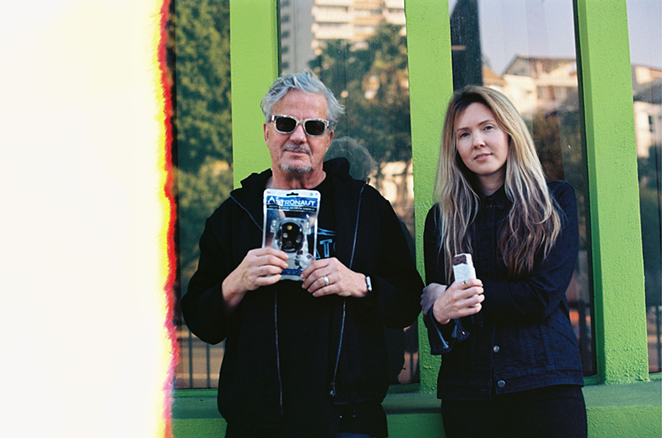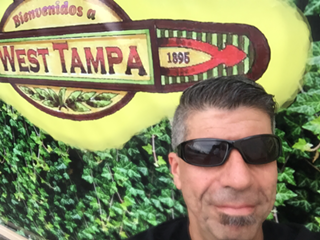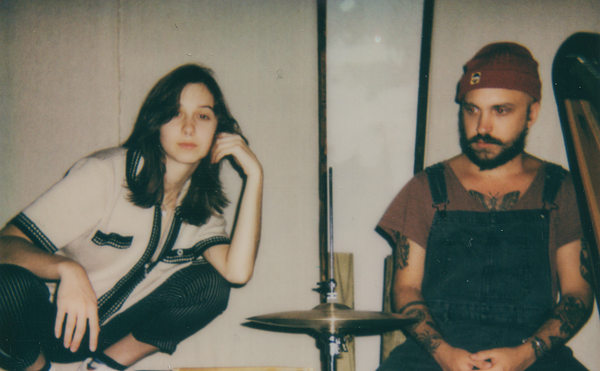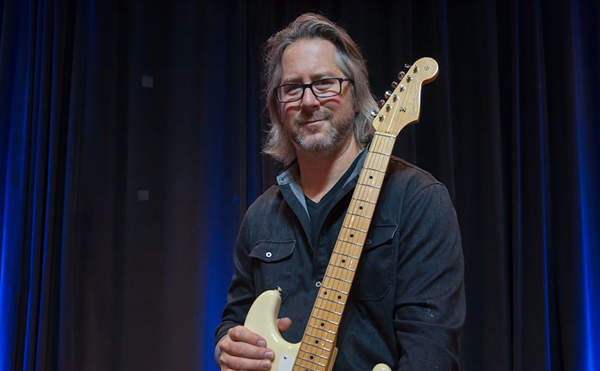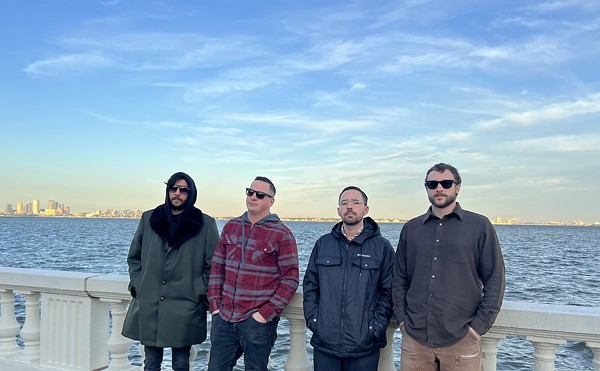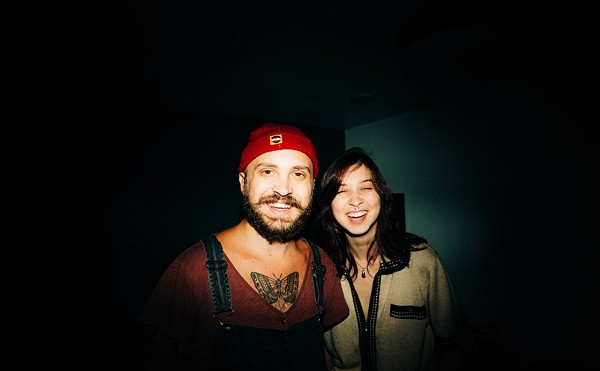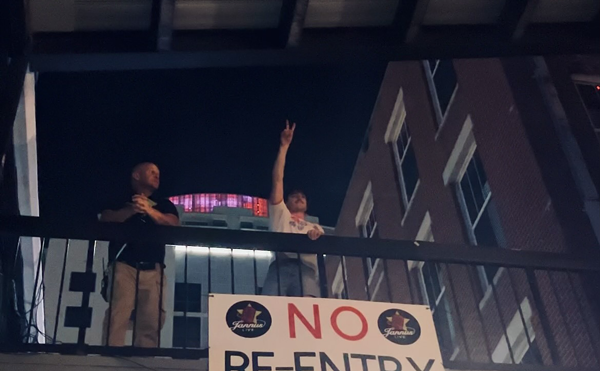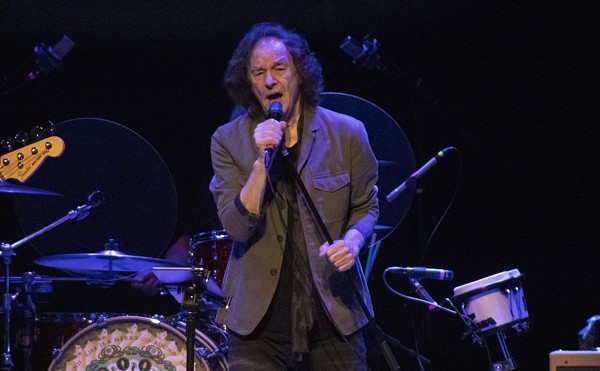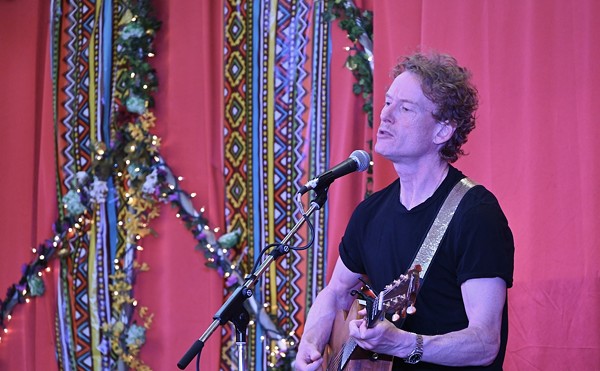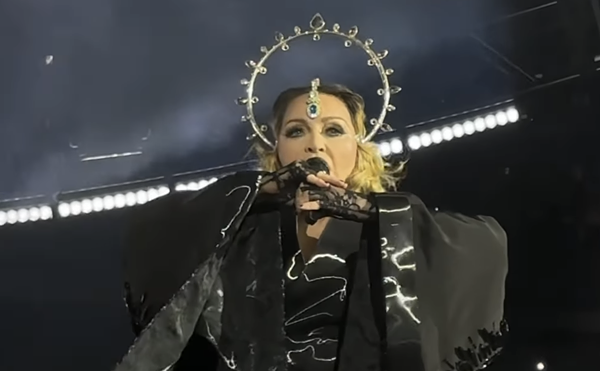Jade Dellinger, director of Ft. Myers’ superb Bob Rauschenberg Gallery, is hosting a completely unique installation making its world premiere.
Dellinger, who hails from Tampa, boasts quite the resume; he’s an art historian with an overwhelming amount of knowledge, a longtime independent curator who has worked extensively in New York City and a published author. As the co-writer and catalyst behind 2008’s “Are We Not Men? We Are Devo!”—a detailed expose of one of the most ingenious and innovative bands of all time—Dellinger’s expertise crosses many boundaries. His fascination with Devo doesn’t stop at the band’s quirky music. The band’s aesthetic, its approach to art, its films and its overall approach all spoke to Dellinger in equal parts so his enthusiasm for the installation on display in Ft. Meyers through Aug. 8.
Postcards for Democracy
Through Aug. 8 at Bob Rauschenberg Gallery
Florida SouthWestern State College, 8099 College Pkwy Bldg. L, Fort Myers.
During an exhibition, Gallery hours are: Monday-Friday, 10 a.m.-4 p.m.; Saturday, 11 a.m.-3 p.m. (closed Sundays and holidays)
(239) 489-9313; rauschenberggallery.com
“Postcards for Democracy” is a trailblazing, interactive concept hatched by none other than Devo frontman, Mark Mothersbaugh. The composer, songwriter and visual artist paired with British singer-songwriter and innovative artist Beatie Wolfe to concoct an idea meant to draw much-deserved attention to one of the country’s most underappreciated institutions, the U.S. Post Office.
“Postcards” was introduced by Mothersbaugh and Wolfe as part of their March 2021 South by Southwest keynote, and it’s a call for postcards from all around the globe. With creativity and imagination left to the creator of the individual card, submissions to the address—8760 Sunset Blvd., West Hollywood, CA 90069-2206—have been plentiful. Covering a vast array of styles, designs and compositions, the small pieces of art inside countless mail sacks are as impressive as they are completely unique.
Far surpassing the expectations of the co-conspirators of the project, at last count, the number of mailed in cards tops the 57,000 mark—and they’re still coming in.
Rather than store or hoard the cards, Mothersbaugh and Wolfe teamed with Dellinger in displaying the mini-works of art as part of the installation making its world premiere at Rauschenberg. With the volume of postcards that have been received, there’s a great chance that this exhibit will be a constantly revolving installation that allows for new cards to be added to the display frequently.
After being given a sneak peak at the exhibit and hearing so much about it via a private showing, I had the opportunity to speak to Mark Mothersbaugh and Beatie Wolfe on the phone to hear more about the project from their own perspectives.
How did “Postcards” go over when you delivered your keynote virtually?
Beatie Wolfe: We recorded it ahead of time here at Mutato and just had a conversation, artist to artist; that's what they had asked for…if it could just be a conversation between the two of us about the project and the response was really fantastic. I mean it's always odd doing those things virtually because you don’t always know how many people are tuning in but we ended up doing a sort of rather bizarre clubhouse talk about it afterwards which a lot of people came to and then you obviously saw a sense of audience and that and that seemed to go on forever (laughs) but it was good! Good fun.
It seems like you hit a lot of people who would be interested in the “Postcards for Democracy” project
BW: Yeah, I think also because South By has always had that combination of music, technology, film interactivity and stuff. So yeah, with something like this I think it did cross a few different, not even fields, but obviously it was related to mail art and our appreciation of it. And then also the election and what was going on with USPS and then you know, art for the people. And it kind of crossed over into a number of different aspects.
I saw the term “tangible artforms” used a lot—what do you all feel the greatest challenges are for bringing those types of things to light?
BW: Well, I'm sure Mark might have something different to say but I think we actually probably feel the same thing. I think technology has obviously just fast tracked so much of what it means to be a human being on the planet, but without reflecting the true cost or value in that process,; I think art and our relationship with nature have got really impacted by that. Technology provides a lot of solutions, but it also shortchanges us on a lot. And I think there's nothing like the tangible art form, whether that's a record, you know, physical record that you could sit down and open up and read like a story or if that's a letter, you know, anything that sort of physically connects you with this experience and makes you present. I don't think the digital experience is ever quite that.
Mark Mothersbaugh: Also, it's not that we're against the digital world at all, we both use it to our advantage and love the tech and celebrate that technology. It's just that it's different. And there are things that you sacrifice and that's kind of what we were talking about, I think. You just have to be aware that they both have a place.
BW: I think if you can take the best of both worlds and if that's the thing I'm constantly thinking about: How do you take the best of the physical or the old world and a lot of the things that we've lost because of digitalization? How do you take the best with some of that? Whether that's tangibility, storytelling, ceremony, and then how do you take the best of, using technology as a sort of invisible facilitator, or another experience that people haven't had before, that makes it more immersive and more multi-sensory?

What do you think the disconnect was for a lot of people in using the USPS and mailing a letter or in this case, mailing a postcard?
MM: I think it's because all of the privatized delivery systems are so good. GrubHub or Amazon or whoever it is, that stuff is all really great and they pick all the low-hanging fruit. But the post office is left with the task of doing all the hard chores, like delivering your income tax information to somebody that's out in the woods somewhere or picking up a letter from them to their grandchildren. Those companies don't have an interest in that because they're just about making a profit. And so there's something very Democratic, intrinsically Democratic about the post office that we were trying to bring attention to.
BW: Mark is talking about goods and services. But, if you're looking at just communication, we now communicate so easily with a whole myriad of different social media apps, or text messages or whatever messenger services—and it's so easy to do that. That whole thing of convenience then ends up leading to laziness really. The mail and the record experience really require you to sit down and be present. So you couldn't just do it and multitask, but then the joy that you get out of that process is so valuable. What we saw with all these people mailing in cards was a lot of people also realized in that process just how much fun it was just to sit down and make a card and send it in. So I think it was a good reminder of something that we can reclaim that is often hidden in plain sight and is forgotten because it's not as convenient or easy as sending a text.
I imagine part of it was just trying to help reawaken that kind of sense of creativity or of creation that lies within us.
BW: For sure. We have the ability to be so much more than we often think we can be, from a very young age. I think kids inherently are so creative and imaginative and they don't really think, “Oh, I'm an artist or I'm a scientist.” Those things come through education and through families and social labeling. We start to put ourselves in boxes and kind of limit ourselves and I feel like everyone has the potential to make a great piece of art in the same way that everyone has the potential to maybe solve some crazy math equation. I think a lot of what limits us are self-imposed limitations more than anything else. So having people sort of realize that they can be creative and that it's not just this thing that's locked away in a cupboard that they can never access. That felt really cool for both of us to see.
MM: For postcards you don't have to dedicate too much of your time or resources. It's something you can focus on and become an artist for 15 minutes, and then you can go back to the real world, whatever that is. And so we'd like to encourage people to activate their creative side. We just saw so many cards that we went ‘Wow!’ I wouldn't have imagined that would have come in here and we just got all these interesting things from people.
Is it fair to say the volume and scope of the cards you’ve received exceeded your expectations?
MM: Yeah, we were wondering if we were going to get a hundred cards…and then thousands came in.
BW: One of the first things Mark said when we were chatting about this project was “Who's going to see this?” We really did it very spontaneously without any real thought. We just felt very passionate about what was going on and we obviously both love mail and so we just kind of threw it to the wind and it caught and so then seeing all these cards coming in, and they’re still coming in, it was really amazing.
Besides the creativity involved, there are a lot of political statements and a lot of kind of off-the-wall stuff. It feels like it was a small way for people to kind of express their thoughts and their ideas.
BW: Yeah, one of the aspects of technology that has been really damaging is that we make something and we want an immediate response. It actually almost becomes about how people respond to it, how many people are commenting. There's this instant feedback gratification that we're all kind of hooked on. I love the idea of people just making something in this sort of bubble; they don't know if it will even get to us or if we necessarily get to see it or maybe we've done the whole thing as a joke, you know? There's this element where when you're in that creation mode, you're just thinking about creating something. And with that you can be free to express yourself how you want to, because you're not thinking about the instant feedback. I think it created a space for people to really be very expressive. It’s just so awesome to see.
MM: I think you really nailed it. It's like the idea was originally just about the post office, how it all started, but then we just became really impressed and surprised by, not volume but the quality of the things we got and that they come from all over the world and people have all different kinds of things to talk about. A lot of it was political just because it happened to be that time in the world in this country for sure. But a lot of it was people just wanting to speak their minds on some sort of topic and it was kind of like an open forum for everything. I'm so happy that the Rauschenberg Gallery made a place where this can be seen by other people because Beatie and I were definitely not going to figure out how to get a website up and put thousands and thousands of images on it and maintain that. We have day jobs so that wasn't going to happen. So it's like, this is great that it made it into a gallery.
Mark, I imagine the crux of the original idea for the project was to encourage support for the U.S. Post Office and the topic of the right to vote and things like that. Were those things you felt strongly about when getting this idea off the ground?
MM: The right to vote actually did play a part in possibly the idea of disassembling the post office. But for us, it was just we wanted the post office to stay around, you know, we weren't really imposing our politics on anybody. We just like the post office because, like I said, there are people that are picking up the easy, plump fun stuff to deliver but there’s nobody but the post office to deliver a lot of important things to people that don't have the luxury of being in a big city or even a small city. So we just would feel very bad if the post office were gone tomorrow.
Is there an end-date for this project?
MM: Well, we’re receiving them and until the post office gets closed out.
BW: Until the post office gets fed up with delivering mail art to us!
MM: Until they start dumping them in the garbage instead of sending them to us! We might have to go through the West Hollywood Post Office and go in the back rooms and see if they've posted any of their favorite ones up on the walls (laughs)
Mark, I know in the past, many years ago, you made a habit of sending postcards to some artists. Is that accurate?
MM: Yeah I mean there's still to this day, there's a movement called mail art, m-a-i-l, that involves people and other artists sending artwork out. Often times to other artists and then getting a response where either somebody adds something to that piece of art and mails it back, or they retaliate with some statement of their own. And I think that started somewhere like in the 1920s in Europe with Dadaists and surrealists and some of the art movements going on then because it was like super high tech to be able to send an image from Vienna to Paris. So that's been around for a long time, but there's still people that still are mail artists. I have books full of art from somebody called DFT who sends me stuff all the time to this day. And somebody called dope sick. I don't even know who it is, but they send me stuff. You know, like every month for the last 10 years, I've gotten something from that person. So there are people out there that are still practicing mail art and I always like that. When I was young it was really important to me to be a nobody in Ohio, just a teenager that could send a piece of art to somebody and there was a chance, they might send something back to you in response. So, yeah, I have a lifelong fondness with mail art.
It's special, right? When you get something like that you receive in the mail, it’s special. It's kind of odd. You feel like somebody took the time to create that or write that or put a stamp on it and mail it to you. I always take it that way.
MM: Yes, I agree with you. I mean, that's an obvious because, nowadays, you know, the internet has made it so easy. You have emojis. You can grab some that have a tear in an eye or they have an angry face or they’re nauseous or whatever or you can grab like a lobster and a boxing glove and put them beside each other and send it to somebody. But the idea that somebody took the time to make something there for you, it is unique and there's not another one like it is that's that is much more special.
I think it's nice for mail carriers to feel appreciated or acknowledged because they don't always get that from a lot of people. So I think that that's very special. So, what do you plan on doing with all the postcards when you have them all amassed? What's going through your minds?
MM: We can build a paper Log Cabin. Well, That's one possibility, I don't know.
BW: With this project, it's really had its own momentum from the minute that we started it. It's been quite wonderful just to see it have its own energy. And everyone getting involved and sharing it and then Jade suggested doing the exhibition and we thought that was a wonderful idea. So we're sort of just taking it as it comes and it feels like the cards have a mind of their own. So, we'll take direction from them after the exhibition.
MM: Yeah, I could see something happening like Beatie and I get a mail truck and we just start driving around the country. And so we let people, one at a time, sit in the back of the truck with big stacks and stacks of cards that they can go through at their own pace. And then, at the end of the day, we kick them out. And, you know, we drive somewhere else to the next street. And then somebody else gets to get in.
BW: Yeah, it could be our art and anti-NFT experience, you know?
Support local journalism in these crazy days. Our small but mighty team is working tirelessly to bring you up to the minute news on how Coronavirus is affecting Tampa and surrounding areas. Please consider making a one time or monthly donation to help support our staff. Every little bit helps.
Subscribe to our newsletter and follow @cl_tampabay on Twitter.

